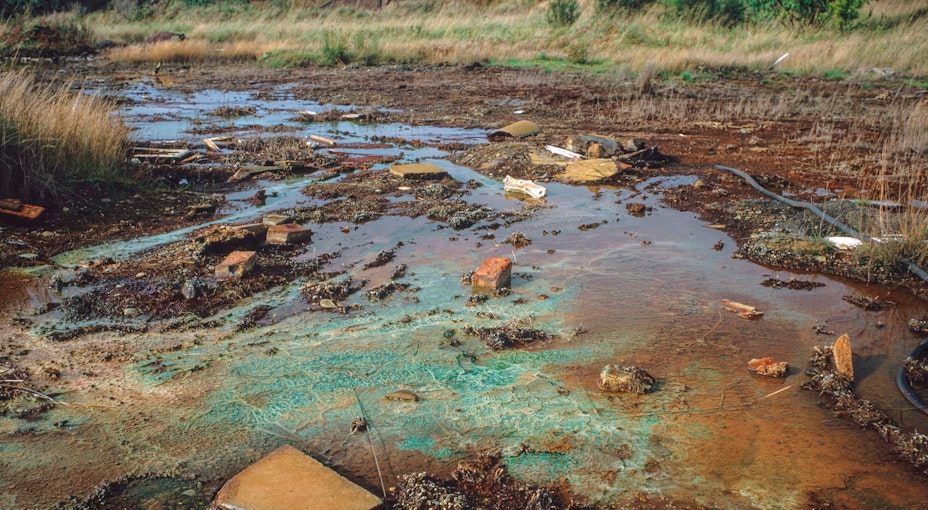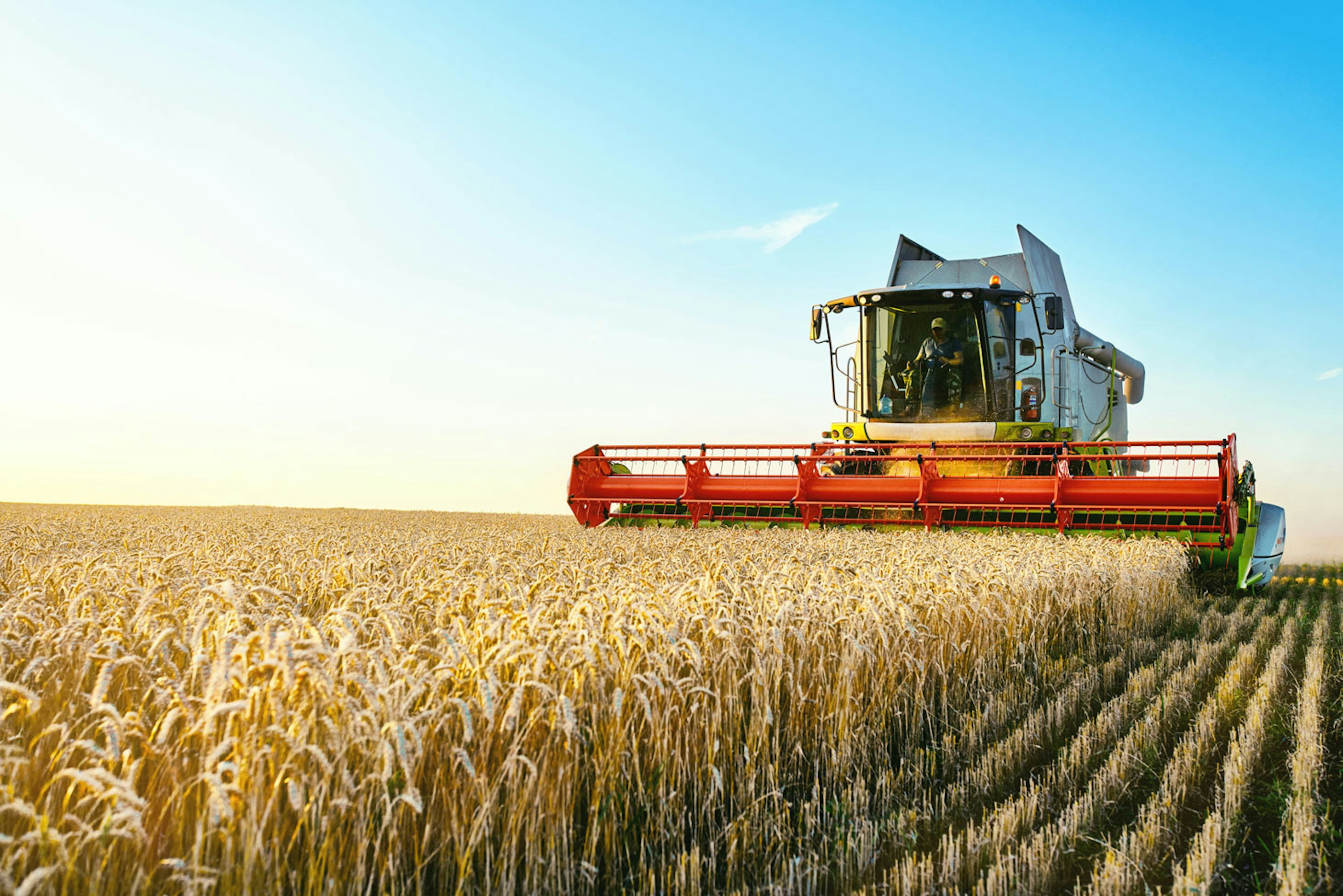Guide to contaminated land
Land use and ownership is central to many different industries, from farming to property development, and construction.
By Alan Boswell Group

No-one wants their land to become contaminated, but sometimes accidents happen. Tanks holding oil, fuel, or slurry may leak unexpectedly. Fly-tippers may dump hazardous items on your land. Contractors may inadvertently cause pollution to watercourses or other people’s land. Despite this, there is often a lot of confusion about what constitutes “contaminated land”. In this guide, we help you understand the legal definition of contaminated land, along with common substances that can cause problems, who is responsible for cleaning up pollutants and who enforces remediation. We also explain what types of insurance such as farm insurance that can provide protection if you inadvertently cause contamination to yours, or someone else’s, land.
What is contaminated land?
In the legal sense, “contaminated land” is land containing substances that are causing – or could cause – significant harm to people, property, or protected species. This also includes land that is causing, or could cause, significant pollution of surface waters (such as lakes and rivers) or groundwater. For land to be legally deemed “contaminated land” under Part 2A of the Environmental Protection Act 1990 (and updated in the Environment Act 2021) there needs to be a pollutant linkage. This means the land must have all the following elements:
Contaminant. There is a source of contamination at a concentration that could cause harm.
Pathway. There needs to be a pathway of exposure. For example, this could be people eating contaminated food, or chemicals leaking from drums and entering an underground water supply via the soil.
Receptor. This is what gets affected by the contamination. Examples of receptors include people, rivers, farmland, buildings, or ecological sites.
If all three of these criteria are not present, then land is not deemed to be contaminated in the legal sense. For example, a site may contain a dangerous level of pollutants but, if it cannot be accessed by the public, then it cannot cause people harm. In other words, the contamination pathway is not present.
Are there other definitions of contaminated land?
You may also encounter non-legal phrases such “land contamination” or “land affected by contamination”. These generally describe land that contains contaminants, but not at such levels that they are a risk to people, property, or protected species.
What substances can contaminate land?
Many different substances can contaminate land. The following are common examples:
Toxic heavy metals (including arsenic, cadmium, chromium, lead, and mercury)
Organic contaminants, such as oils, tars, solvents, and phenols
Toxic or carcinogenic chemical substances such as arsenic and cyanide
Asbestos
Combustible materials
Corrosive substances
Radioactive substances
What are the types of contaminated land?
There are many different kinds of land that can become contaminated. Some industries and businesses are at higher risk of causing contamination to land, such as chemical works, landfill sites, oil refineries, scrapyards, and mines. However, many other types of land are at risk of contamination, or of causing contamination to watercourses or other people’s land. A good example is farmland:
Pesticides and sheep dip can leach dangerous chemicals into the soil.
Asbestos was frequently used as roofing and cladding on older farm buildings.
Poorly maintained oil and diesel tanks can leak hydrocarbons, especially when they haven’t been bunded (you will need to have bunded tanks if you have environmental impairment liability (EIL) insurance).
Leaks and spills of slurry can pollute land and waterways.
In short, whatever kind of land you own, you need to be aware of potential contamination risks and plan accordingly.
How to check if land is contaminated?
If you believe that your land may be contaminated, then you should seek help from a qualified environmental consultant. You should also be sure to report to the Environment Agency as soon as possible – any delay, or perceived delay, could lead to a fine. They will use a number of steps to assess your land. In the first instance, they will review the land’s history and environmental setting, followed by a site visit and an assessment of any potential contaminant linkages that may be present. They will then provide you with a report. If this report identifies risks to people or the environment, then you will need a further and more detailed assessment. This may include taking soil or water samples and analysing them to determine the location and quantities of any contaminants. A further report will then recommend any necessary remediation strategy to clean up the land and mitigate any risks. If you are considering purchasing a piece of land you can contact your local council’s Pollution Control Team to see if they hold any information on record relating to contamination of the land in question.

How to deal with contaminated land in conjunction with the Environment Agency?
If you commission a detailed report from an environmental consultant, they will recommend appropriate ways of dealing with any contamination. This will not necessarily mean that you have to remove all the contaminants. The aim will be to make sure your land does not pose a risk to health or the environment. This could be achieved by breaking the contaminant linkage chain. Because of this, different types of land will need different kinds of remediation. For example, if the land is used for growing food, the contaminants would have to be completely removed. On the other hand, if the land is to be used for a tarmacked car park, the clean-up might not have to be as thorough. There are many different methods of remediating contaminated land. These range from excavation and removal of soil, cover systems that contain the pollution, and various techniques that solidify or stabilise contaminants or reduce the concentration of contaminants in the land.
Can contaminated land affect nearby lakes or rivers?
Yes. When it rains, contaminants can get washed into nearby lakes, rivers, and other water sources. This can cause harm to animals and risk contaminants being passed through the food chain. In some cases, contaminants can pollute drinking water, causing a risk to human health.
Who is responsible for contaminated land?
If land is deemed to be contaminated in the legal sense, the Environmental Protection Act states that whoever caused or allowed the contamination is responsible for clearing it up. This is the ‘polluter pays’ principle. However, if the responsible party cannot be identified (for example, if someone has anonymously fly-tipped asbestos on farmland), the council investigating the issue or Environment Agency will decide who is responsible. In most cases, this will be the landowner or the current occupier of the land.
Who enforces the remediation of contaminated land?
Normally, remediation of contaminated land is enforced by local authorities. However, certain ‘special sites’ are regulated by the Environment Agency (in England), Natural Resources Wales, or the Scottish Environment Protection Agency. Special sites include land that seriously affects drinking water, has been used for certain industries such as oil refining, or is owned or occupied by the Ministry of Defence. You can find more details on the Gov.uk website.
What are the risks associated with contaminated land?
Aside from the risks to health and environment, failing to deal with contaminated land can be costly for landowners. If you fail to comply with every aspect of a remediation notice, the enforcing authority has three options:
Prosecuting you
Starting civil proceedings against you
Undertaking the remedial work and recovering the costs from you.
In short, failing to deal with contaminated land can be very expensive. That’s why it’s important to make sure that you have the right insurance in place such as pollution liability insurance. While public liability insurance can in certain circumstances cover you for pollution that’s caused by a sudden, identifiable, unintended, and unexpected incident, it won’t cover environmental damage that happens gradually. That’s why it’s recommended to take out Environmental Impairment Liability (EIL) insurance as part of your farm insurance policy , especially if you operate a business that is at high risk of causing contamination, such as a farm. This then covers you for potentially expensive legal, clean-up, and reinstatement costs, as well as damages, following a pollution incident. Even if you don’t own land, it is often recommended that transportation businesses and contractors have EIL insurance to protect them when they are operating on other people’s land and are responsible for any contamination they cause.
What environmental impacts does EIL insurance cover?
Comprehensive EIL insurance will cover a wide range of environmental impacts, such as soil, air, and water pollution, oil storage pollution, fly-tipping, noise pollution, damage to natural resources, flora and fauna, and third-party damage. If your land is a Site of Special Scientific Interest (SSSI), you must inform your insurer as this could have an impact on the remediation of contamination if an incident was to occur. You can check if land is an SSSI using Defra’s map.
Do I need any other kinds of insurance?
While EIL policies will cover legal defences (although not fines) associated with a claim, it will not cover you if a claim is made against you personally as a director. To protect against this eventuality, it’s a good idea to take out Directors’ and Officers’ (D&O) insurance.
Summary: understanding contaminated land
If you own land, you need to be aware of the risk of contamination. In this guide, we’ve covered a range of common contaminants, as well as provided you with a legal definition of contaminated land. If you have any concerns that your land might be contaminated, it is best to seek help from a qualified environmental consultant. It’s better to deal with contamination as soon as you can, rather than risk enforcement action against you. However, while public liability insurance can protect you against sudden and unexpected environmental incidents, for full peace of mind you should consider taking out both Environmental Impact Liability (EIL) insurance as well as Directors’ and Officers’ (D&O) insurance.
Need help with your insurance?
Whether you need a quote, have a general enquiry, or want to talk it through over the phone, we're here to help.
Send an enquiry
Related guides and insights

Top farm diversification ideas
Last year 68% of farms had chosen to diversify. We look at some the ways farmers are diversifying and the possible profits behind those ideas.

Guide to farm succession planning
The absence of succession planning can mean you’re unwittingly placing your farm business at financial risk. Here, we explore why farm succession planning is important and what you should consider when putting a plan together.

COSHH: A guide for farmers
Farms use and generate a wide range of hazardous substances, meaning they need to comply with COSHH regulations. This article shows you how to comply and keep your workplace safe.

The Garretts – a multi-generational farming family invested in their financial future
We spoke with Roger and Tina Garrett about how Alan Boswell Financial Planners assist them with their personal pensions and employee benefits.

A guide to arable farming in the UK
Arable farming is key to the UK’s agriculture and economy. We look at today’s arable farming and how best to insure arable farms against loss.
